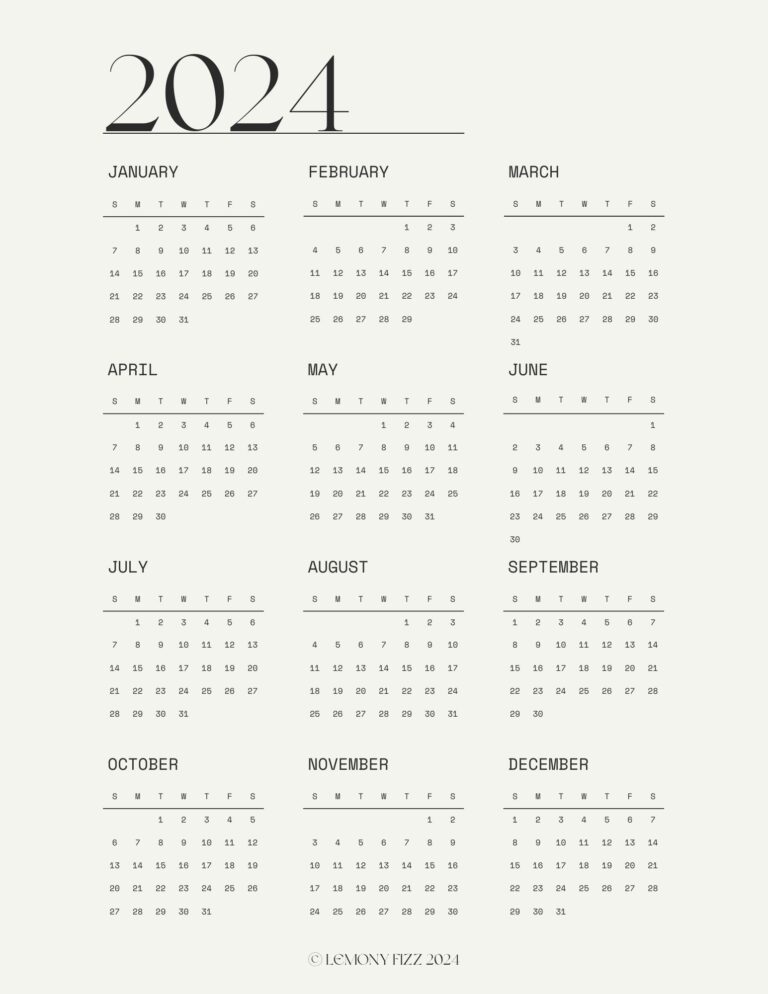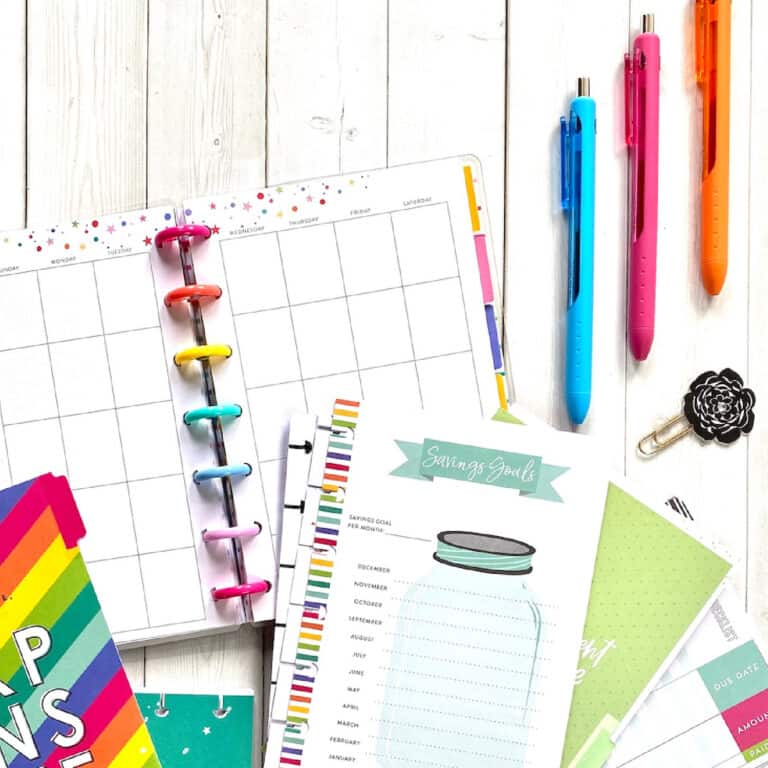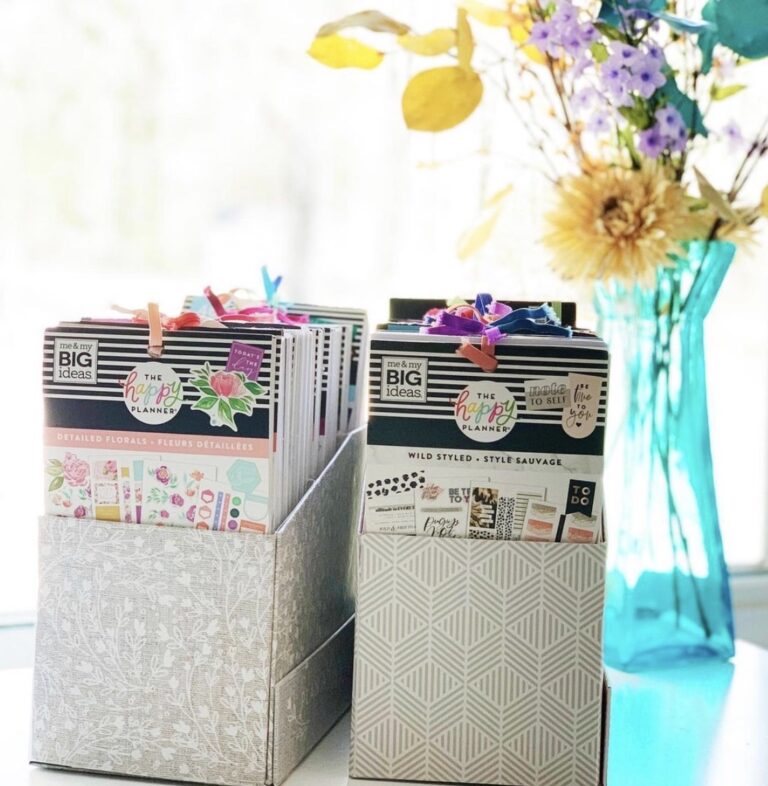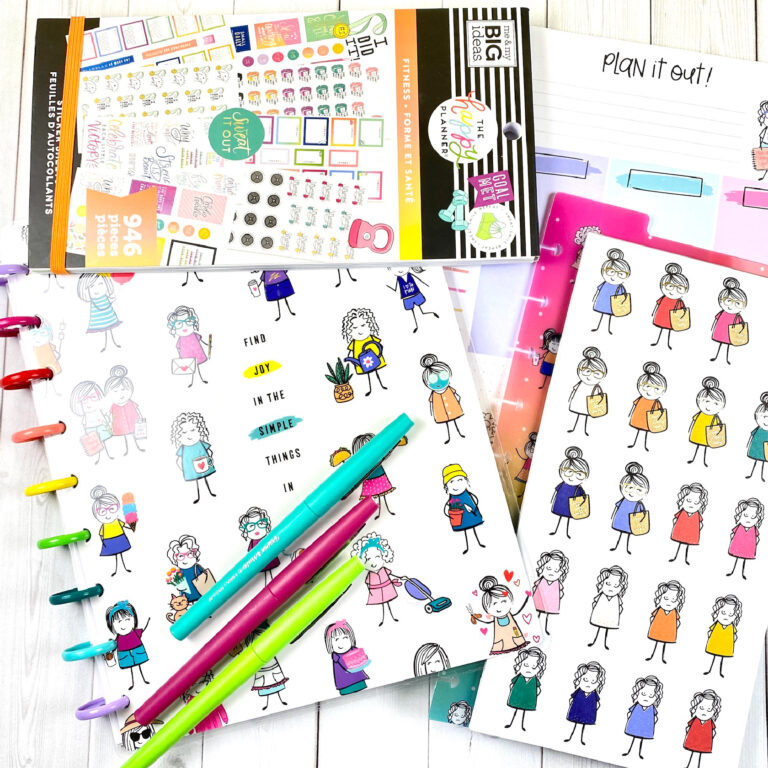How to Improve Handwriting: 7 Easy Tips
We may earn a small commission for purchases made through affiliate links in this post. For more information go to our Privacy Policy.
If your penmanship leaves something to be desired, it’s never too late to work on changing that. Today, I am going to show you how to improve handwriting with these easy and effective tips I have learned!
How much time do you actually spend writing things down these days? Things that many of us once did on paper, we now do through email, digital planners, or online.
As we move more and more toward a digital world, handwriting (in general) is declining. Without the need to write, we get less practice, well, writing.
And yet, I’m a firm believer in the power of physically putting pen to paper. Studies (and experience) have shown that when we write things down, we remember them better.
Other benefits of handwriting include:
- Allows for and encourages creativity.
- Developing good hand control for doodling and drawing.
- The slower pace of writing allows time for processing.
That’s why I love my trusty planner so much! It allows me to write down everything I need to remember to do, gives me space to let my creative side out, and encourages me to work on my handwriting.
Unfortunately, when you can barely read your own handwriting, writing down everything in a physical planner can end up causing you more frustration than providing benefit. In other words, spending time trying to interpret what you wrote will hinder your productivity (and give you headaches!) rather than saving you time.
So, can you actually improve your handwriting? That’s only for kids to work on and not something adults can do right?
If you fall into the poor penmanship camp, I have some good news: you’re not alone and you CAN improve your handwriting easier and faster than you may think!
Today, I’m arming you with the tips you need to get better handwriting.
How To Improve Handwriting In 7 Easy Steps
In the essence of being transparent, improving your handwriting will take commitment and work. But, with a bit of practice, you’ll quickly see progress! Use these tips to help you get started.
1. Evaluate Your Handwriting
Before you can begin working on how to improve your handwriting, the very first thing you should do is take a close look at what’s making your handwriting hard to read.
Are the letters spaced too closely together? Do you close out all your letters or do you leave letters like “o” open?
Take a little time to assess your handwriting to determine what’s “wrong” with it so that you can improve it. If you aren’t sure what the problem might be, you can compare your handwriting to another handwriting that you think looks neat.
Check these areas in your baseline evaluation:
- Letter and word spacing
- Consistent letter height (upper case letters are taller than lower case letters)
- Letter slant
- Letter height
- Finishing off letters (dot i’s, cross T’s, close round letters like o’s)
Once you complete your evaluation, it’s time to get to work on improving your handwriting! Follow the process outlined as you keep reading, and you’ll see improvement before you know it!
2. Write Slowly
One big reason for terrible penmanship is that you’re trying to write too quickly or are trying to multitask too much. As you try to write faster (or focus on too many things at one time), you sacrifice the quality of your handwriting.
Writing doesn’t need to be fast or done while you’re also tackling 3 other things! Retraining your body as you improve handwriting means slowing down to be more mindful and have time to pay attention to how you form and space letters.
How do you write neatly and fast?
Don’t worry; slowing down at first is essential, but you won’t be writing at a snail’s pace forever! As you build muscle memory that incorporates the new techniques, your new, beautiful handwriting will naturally speed up.
3. Be Specific About The Pen You Use
It may sound small, but a good writing pen makes a HUGE difference. There are so many options of brands and types of pens on the market that it can seem confusing as to which one is best.
A gel pen may be too slick and make it hard to slow down. A felt tip pen may provide too much friction, while the right ball point pen may be the happy medium. Ultimately, it comes down to you and how each style feels as you use it.
For example, I personally prefer gel pens, but there are certain ball point pens that I like to use. On the other hand, if you need the friction of a felt tip pen to help you slow down, that might be the right fit.
Which pen is best for fast writing?
I will say that a pen that glides on the surface makes writing easier. And, when it’s easier to write, you’re more likely to put in the effort to do the extra little things to improve your handwriting.
Note: Your favorite style of pen may change over time!
My current favorites include the:
4. Loosen Your Grip On The Pen
Have you heard the old term “choking the pencil”? It isn’t used as much anymore, but it referred to holding your pencil (or pen) way too tightly.
A frequent cause of poor penmanship is maintaining a death grip on your pen. Holding your pen too tightly will cause hand and arm cramping which will cause the quality of your handwriting to suffer.
As you’re working on how to improve handwriting, pay attention to how firmly you grip your writing utensil. And after you find a pen style you like, work on relaxing your hand grip.

When you grip your pen, it should be just firm enough that you can hold onto your pen and maintain control yet relaxed enough that you could let the pen slide out of your hand if you chose to.
Simply learning to relax your hand grip will result in smoother (more comfortable) writing.
Tip: If you’re working on loosening your grip, you find that there will be times when you go back to a tighter grip without realizing it. Try to check in with your body every few minutes and loosen your grip if you find yourself gripping the pen tightly. Over time, you won’t need to check in as often because the looser grip will become a habit.
5. Pay Attention To Your Writing Surface
I’m using this term a little loosely to encompass both the paper you use as well as the surface underneath.
The texture of your paper will play a role in your handwriting as it will impact how your pen lays down its ink. Do some experimenting with different paper types (smooth, rough, bumpy) and how your preferred pens work with them.
You may find that you need to use different types of pens with different types of paper. I personally use that reasoning as an excuse for buying more pens (give me ALL the pens)!
The surface under your paper is just as important as the actual paper itself. Writing on a solid desk will give you better handwriting whenever compared to writing on top of a wobbly, uneven surface. Keep that in mind as you write and opt for a solid, hard surface anytime you really want better handwriting.
6. Work On Improving Consistency
If you pay close attention to neat handwriting, part of what makes it that way is that it’s very consistent. Each “a” is written in nearly the identical same way, for example. The same can be said for every single letter in the alphabet.
As you work on how to improve your handwriting, you may experiment with adjusting your style and how you approach writing each letter. Find a style you like, then work on making it consistent and comfortable so that every time you write a “q”, it looks the same.
This is about turning new techniques into habits!
7. Find Ways To Practice
In the same way that practicing ANYTHING in life helps you improve, practicing your new techniques will lead to changing habits and improved handwriting.
Even if you don’t normally do a lot of handwriting in your everyday life, there are lots of ways you can practice your handwriting – and even make it fun!
Here are a few ideas:
- Do drills – There are simple drills such as simply repeating the same letter again and again, filling up an entire page. There are also other hand lettering and doodling drills you can do to help you maintain good control of your pen and improve your handwriting.
- Write letters – This tradition is becoming a lost art, but it’s still a wonderful thing to receive a handwritten letter or card in the mail!
- Write out your grocery list on paper.
- Filling out forms – We’ve all got to do it from time to time. Slow down and use it as a chance to practice.
- Journal – Put pen to paper and journal each day. Bonus: Not only will it offer you the opportunity to work on improving handwriting, but it’s great for mental and emotional health too!
- Written puzzles – If you love doing written puzzles such as crosswords, logic puzzles and more, it’s an ideal time to practice better handwriting since you probably aren’t in a hurry.
- Use a planner or bullet journal – Not only will you stay organized, but it’s great motivation for writing neatly so you can see what you need at a glance.
How To Improve Handwriting: Follow Up
I like to keep things as simple as possible, so let’s take these 7 already simple steps and simplify them down further. When you want to get better handwriting, it really comes down to 3 things:
- Slow down
- Be consistent
- Practice!
Good handwriting is an important skill for life – even in our current digital age. And, it’ll help improve your productivity when you also use your new and improved handwriting for your planner!








